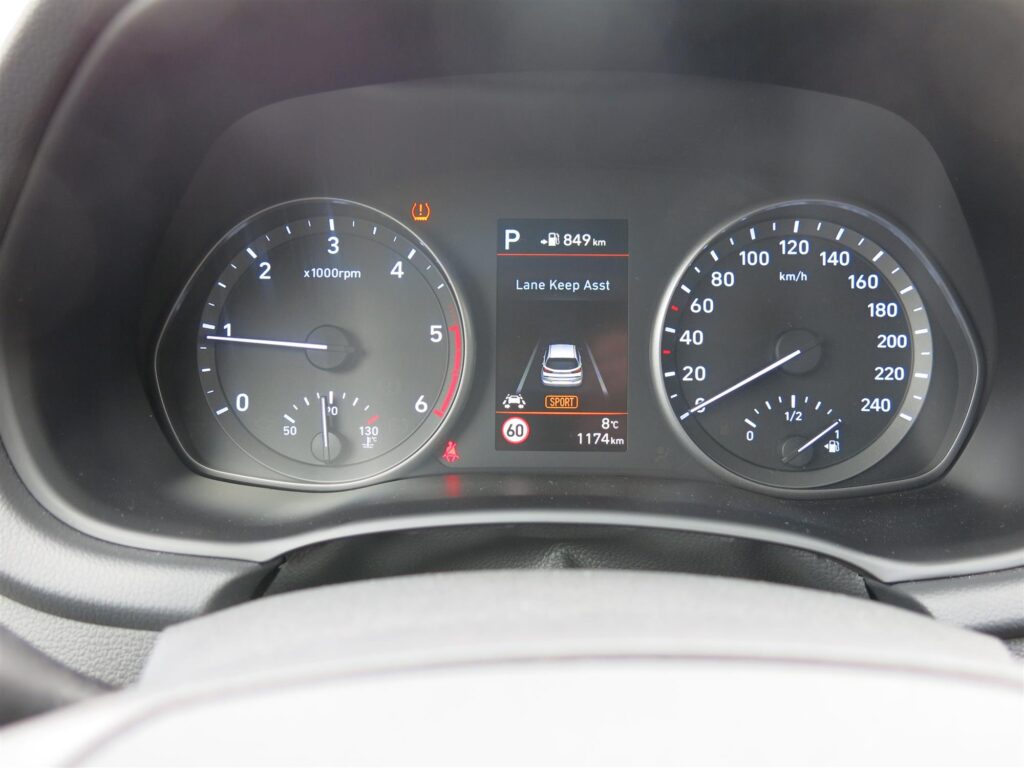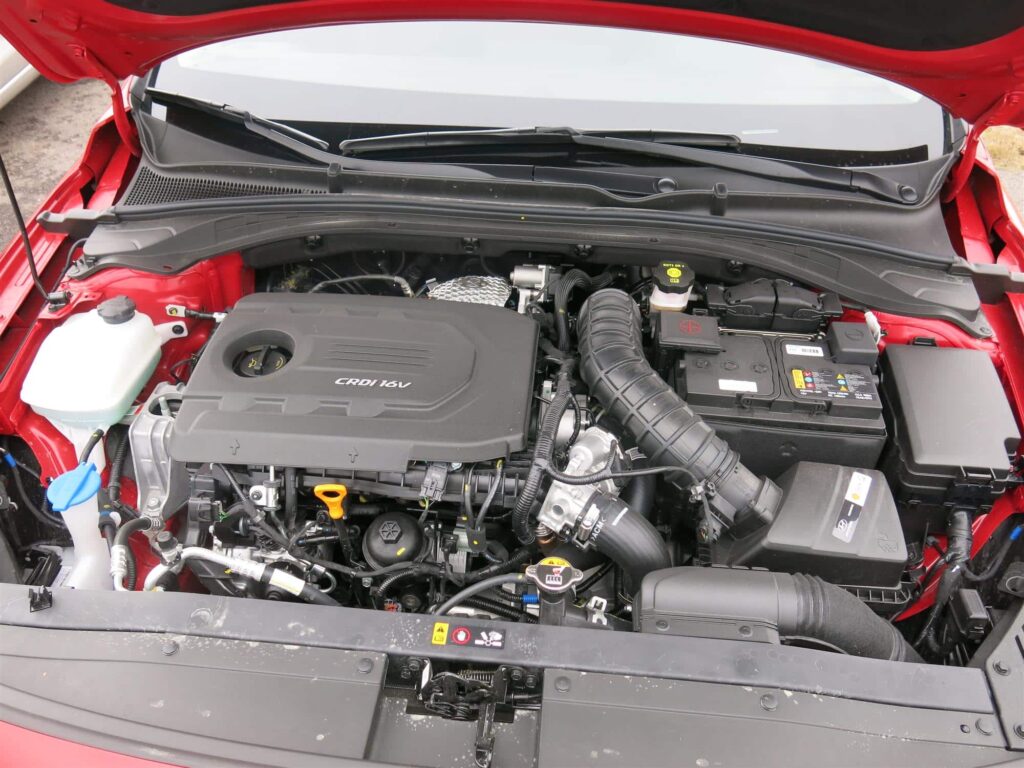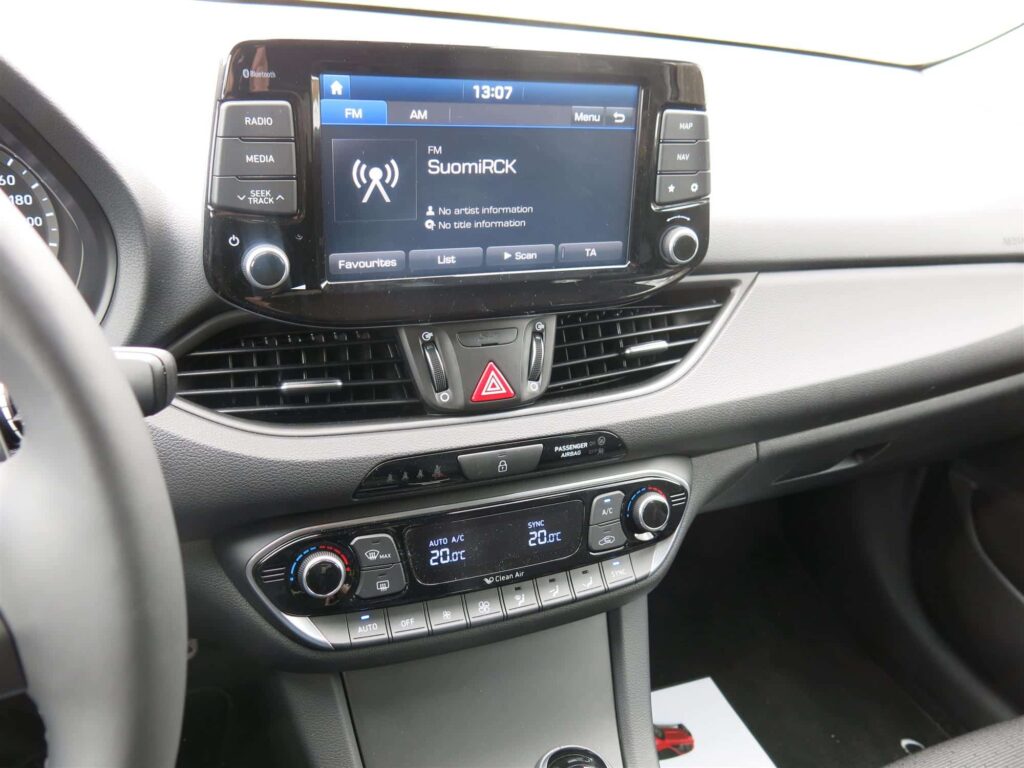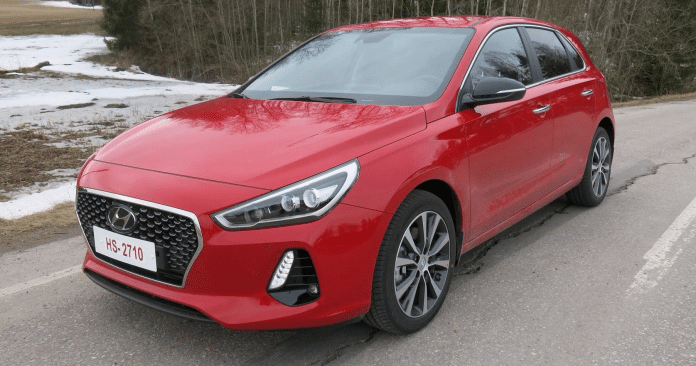The third-generation Hyundai i30 will usher in a new era, according to the importer. The new model has been designed and developed in Europe for local car buyers and will be produced here.
The importer held a press launch in Porvoo at the Premier Park driving practice track, where there were good opportunities to test the car’s behaviour in extreme conditions.
During the test, the car’s control systems worked well and the car felt very stiff and went in the direction the driver wanted.
The on-road test included a lane-keeper, which either simply warns or, if necessary, steers and keeps the car in the middle of the lane.
The Hyundai’s lane-keeper worked well and was not as annoying as the first versions of the car.
Even on the highway, the car felt very stiff and turned well on winding roads.
The driver’s seat adjustments are adequate for most drivers and it has adequate backrest lateral support.
Visibility from the driver’s seat is good both forwards and backwards. The side mirrors are large enough.
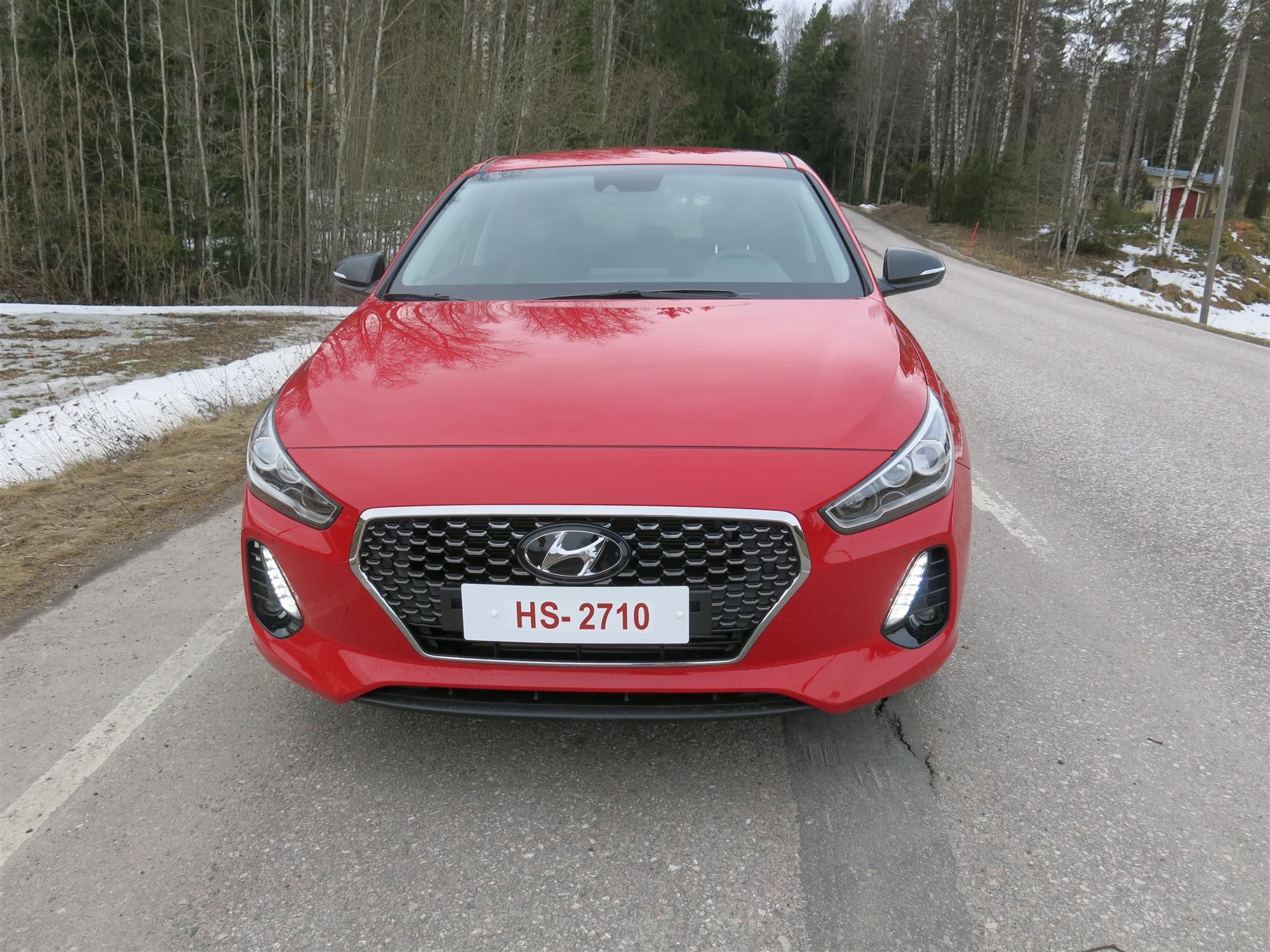
A remarkable model
The Hyundai i30 is an important model for Hyundai. Since 2008, more than 800,000 Hyundai i30s have been sold in Europe.
According to the importer, the company’s aim is to become the largest Asian car brand in Europe within a few years.
In Finland, the Hyundai i30 has performed well in its class. Last year, its sales increased in line with the market growth.
The new-generation i30 marks the start of Hyundai’s biggest-ever range overhaul.
Hyundai is introducing a new design element in the new generation i30, the waterfall-like “Cascading Grille” radiator grille, which will become a signature feature of all Hyundai models.
On both sides of the grille, all models feature LED daytime running lights and, depending on the equipment level, either projector or LED lights.
Specific improvements include a new heated steering wheel from the Comfort trim level upwards.
The boot is 395 litres (according to VDA 211) and can be extended up to 1 301 litres when the rear seats are folded forward. The boot has an adjustable floor and a ski hatch.
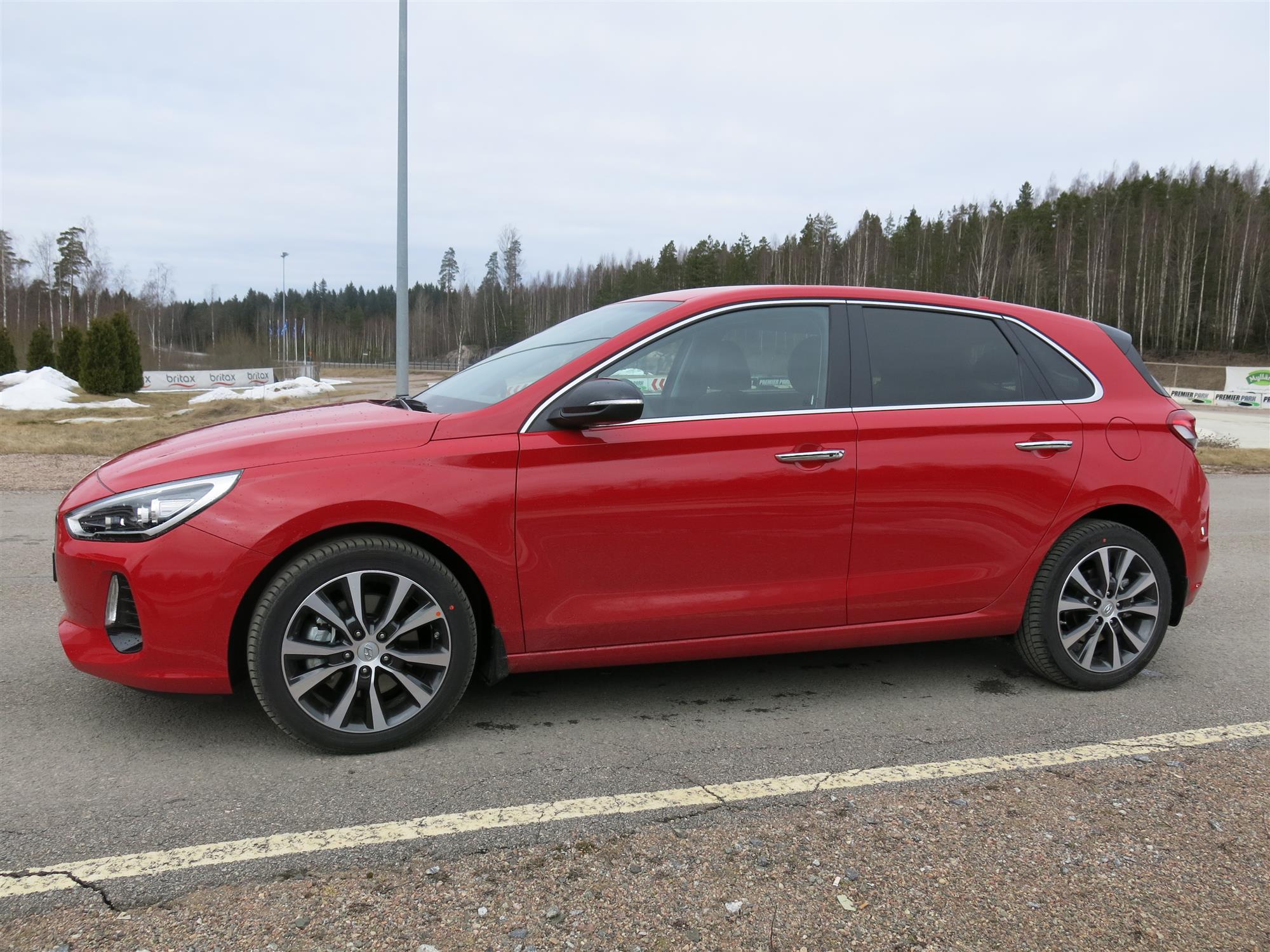
Six engine options
The new generation Hyundai i30 has six engine options (three petrol and three diesel).
The cheapest option is a 1.4-litre naturally aspirated engine developing 74 kW (100 hp).
For those looking for the most economical petrol engine, the 1.0-litre turbo (88 kW/120 hp) was introduced with the i20 in spring 2015.
An all-new engine for the i30 is the 1.4-litre turbo, developing 103 kW (140 hp) and 242 Nm of torque. As with the smaller turbocharged engine, maximum torque is available almost from idling speed as soon as the revs are raised
1 500 rpm.
The engine is available with a choice of 6-speed manual or 7-speed dual-clutch automatic transmission.
The diesel engine in the new generation Hyundai i30 is always the 1.6-litre, with three power options available. In the base model, the engine develops 70 kW (95 hp). The higher trim levels with manual gearbox offer 81 kW (110 hp).
If you opt for the dual-clutch automatic, it comes with an engine rated at 100 kW (136 hp).
More important than high power in normal driving is torque, which is always available in diesel engines at 280 Nm (300 Nm in the power version).
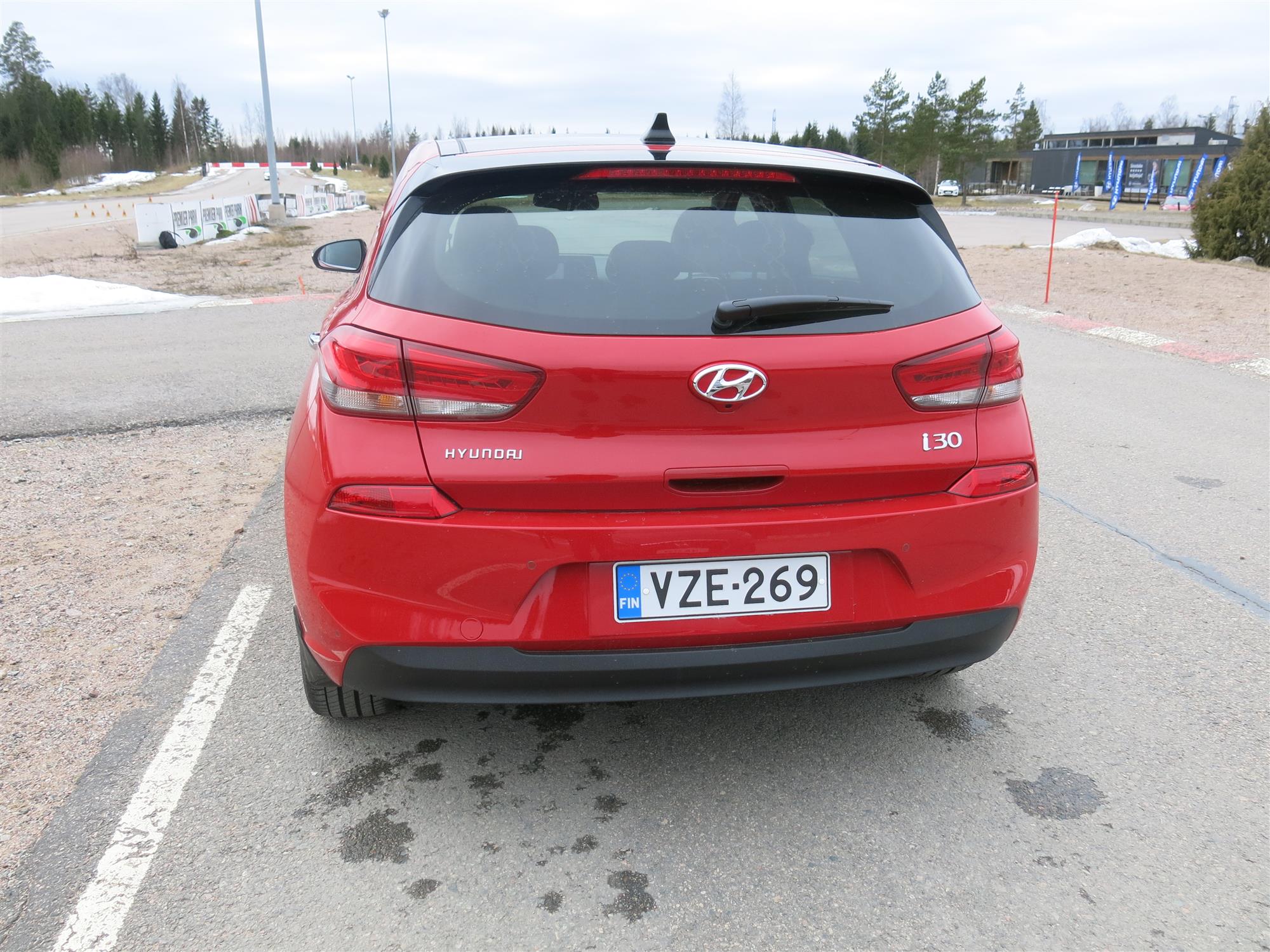
Driving characteristics developed for extreme conditions
According to Hyundai, the new generation Hyundai i30 underwent a long and varied test programme. Driving characteristics were tested on prototypes on some of Europe’s most demanding race tracks, including the legendary Nürburgring Nordschleife.
In addition to the tracks, the i30 has been tested in the Swedish winter and in the heat of southern Spain during its development. It has also towed a trailer in the Alps.
A completely new chassis was developed for the new generation i30. The electric power steering is 10 percent more direct and responds 15 milliseconds faster than before, says a Hyundai press release.
The standard multi-link rear suspension features twin lower control arms and shock absorbers designed for sporty driving. As part of a good chassis design, the i30 also features powerful brakes, including larger front brake discs, the release says.

Hyundai wants to emphasise safety
The body plays a major role in both driveability and safety. The new generation i30 has a body that is very rigid, but also very light. As much as 53 percent of the body structure is made of high-strength alloy steel.
The extensive use of high-alloy steel has reduced the body weight by 28 kg compared to the previous generation, while at the same time improving torsional rigidity by more than a fifth,” says Hyundai in a press release.
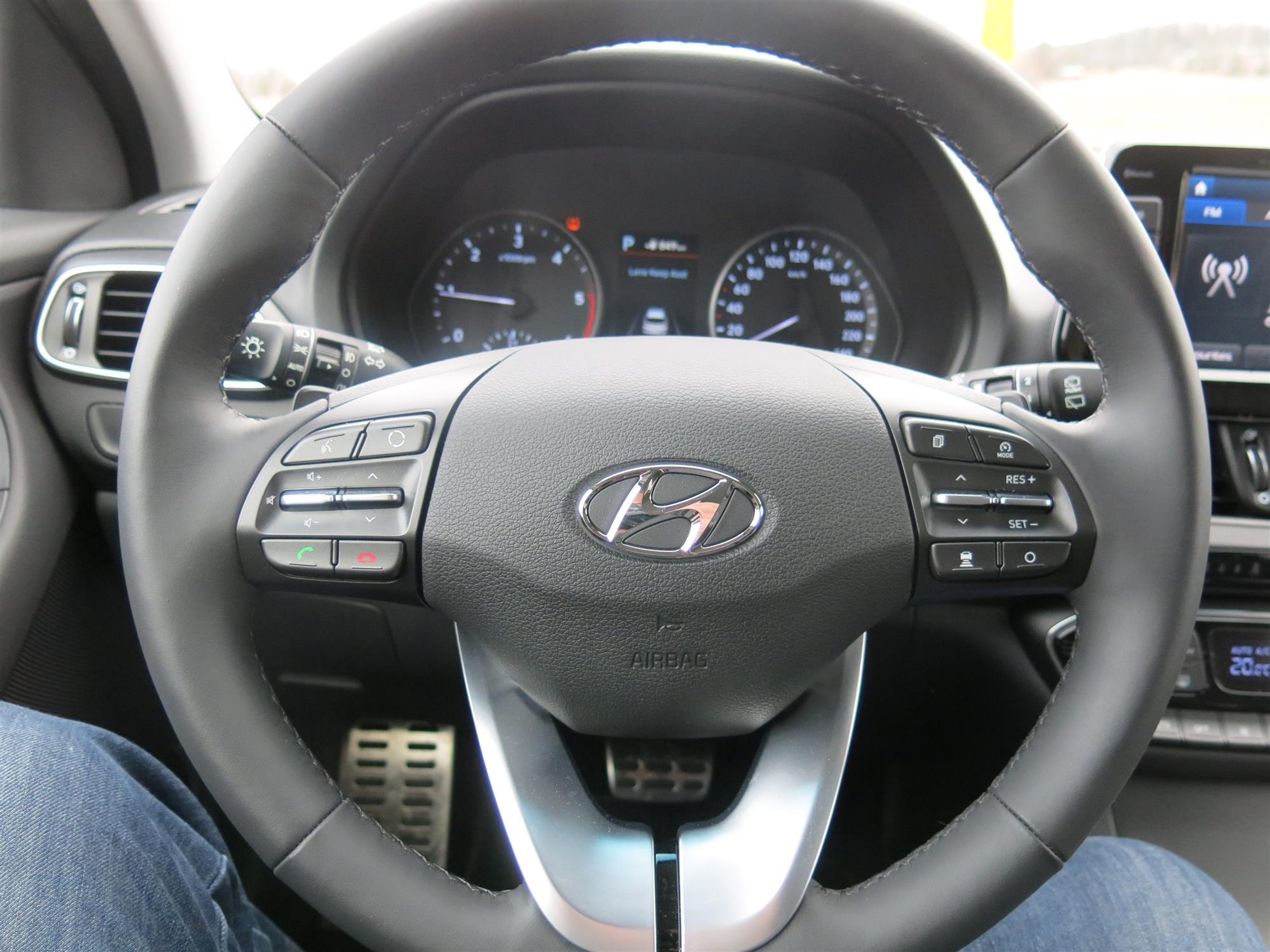
The base model costs less than €20 000
The new generation Hyundai i30 offers three trim levels. As with the previous model, the entry level is Classic, available with a 1.4 MPI or 1.6 CRDi (95 hp) engine.
The basic Classic trim level includes automatic emergency braking, lane departure warning, lane departure warning, collision warning and driver alertness monitoring.
Safety is further enhanced by the High Beam Assist system, which automatically switches to low beam when the situation requires it, allowing the driver to concentrate on driving.
The next level up is Comfort, with a choice of a 1.0- or 1.4-litre turbo petrol engine. There is also the option of a 1.6 CRDi, with power depending on gearbox choice.
The Comfort trim level brings a range of features to the i30 that enhance its looks, driveability and comfort. Standard features include rear parking radar and reversing camera, a choice of driving dynamics (with DCT gearbox), dual-zone automatic climate control with interior climate control and 16-inch alloy wheels.
The optional equipment package includes lane change assist, blind spot warning, cross-traffic alert and speed limit detection.
The top-of-the-range i30 Style is available with the same powertrains as the i30 Comfort.
The highest trim level offers partial leather upholstery and the driver’s seat is electrically adjustable with two memory seats. A smart key makes it easy to get in and out of the car.
The audio and navigation system features an 8-inch touchscreen and can be connected to a smartphone with Android Auto or Apple Carplay. There is wireless charging for the smartphone (Qi-compatible).
Dual LED headlights improve visibility and there are also LED lights at the rear. The wheels are 17-inch and the look is completed by tinted rear windows.
The new generation i30 5-door is the first in a 4-door range. It will be followed by the Wagon model, the sporty N model and the hatchback.
Prices for the Hyundai i30 start at €19 390 for the 1.4-litre uncharged model. The most expensive model costs €32 390.

